Posts Tagged: salvia
Sage It Ain't So!
Phlomis fruticosa (Jerusalem Sage), family Lamiaceae. Mediterranean native, perennial evergreen. Suitable for heavy clay soils. Drought tolerant, a little water is fine but do not overwater. Its fuzzy blue-green, fragrant foliage contrasts well with bright yellow flowers (also has pink variety) arranged in whorls, with several on one vertical stalk, one on top of another. Deer resistant, attractive to bees, butterflies and birds (a good "habitat" shrub). Combines well with ornamental grasses, lavender, salvia (especially blue flowers), or with chartreuse (Spirea 'Lime Mound' or Abelia variegated). Blooms April/May/June. Cut flowers are nice. In February/March, cut off spent flower stalks. Stalks and seeds are ornamental when dry and provide winter interest and food for birds. Averages 4' x 4', but it can assume a much wider stance. http://ucanr.edu/sites/scmg/Plant_of_the_Month/May_2007-Phlomis_Fruticosa
In my western-facing front yard, it really took off this spring, the mounded foliage expanding up and out until spikes finally emerged. Very interesting to watch its evolution. Each new spike spirals upward, a blossom emerges, another spike, another blossom--seemingly endless. It has drawn many a comment and cutting request from passersby. It seems okay with early sun/shade and late day sun, but it handles full sun and high heat. Easy to grow? I took one cutting, it's now 6" with 5 leaves and--wow--a blossom. Time to make more for the October plant exchange.
I initially thought this was a Salvia spathacea (Hummingbird/Pitcher Sage), a California native endemic to the coast, stretching from Orange County to the Napa Valley. The flowers and form are quite similar. Our Master Gardener Program Coordinator, Jennifer Baumbach, has one in her yard and confirmed its true identity. I am forever learning from other Master Gardeners and most grateful for their accrued knowledge.
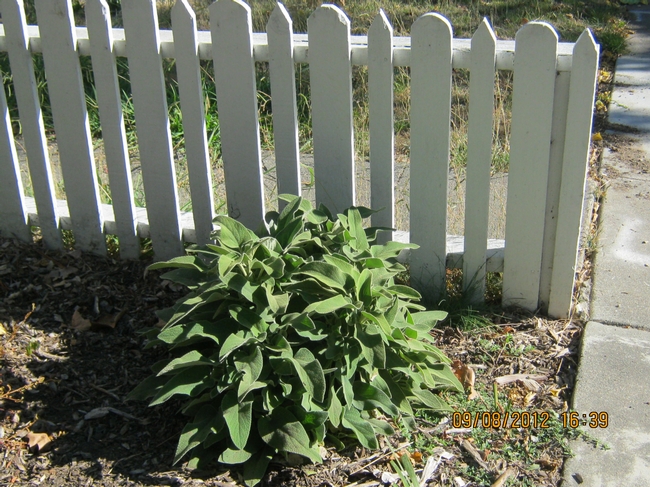
salviaylw 1
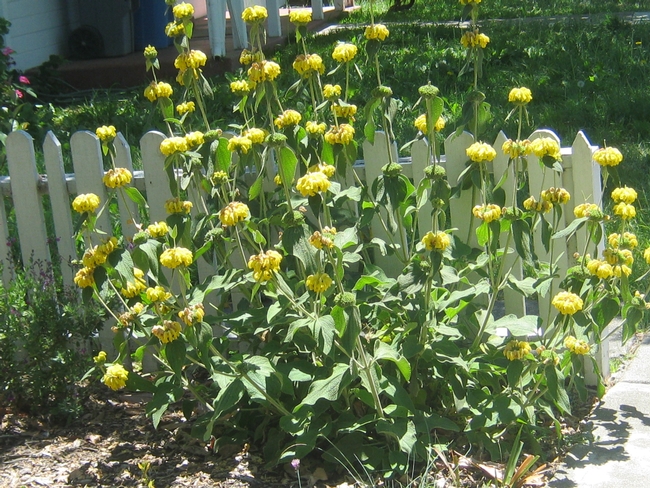
salviaylw 2
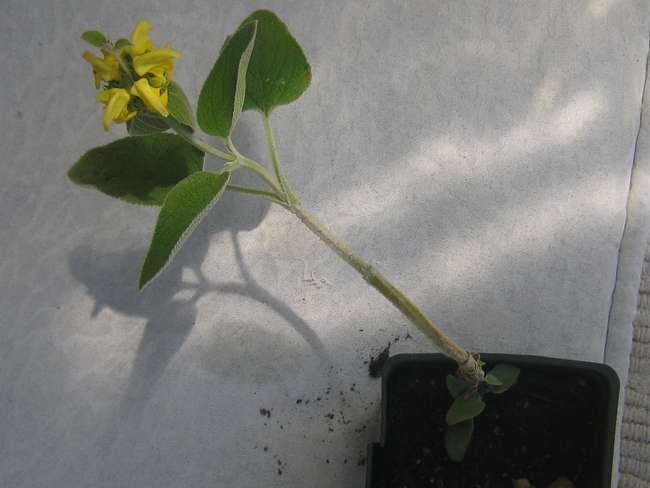
salviaylw 4
San Francisco Flower and Garden Show 2013
This weekend I had the good fortune to attend the San Francisco Flower & Garden show in San Mateo. It has years—at least a decade—since I last was able to go (back when the show was still being held at the Cow Palace). So I was quite excited about seeing all the latest gardening trends.
Frankly, there was so much to see—display gardens, vendors, seminars, and plant market—that it was overwhelming! I’m not much of a trendspotter, so perhaps that’s why I didn’t see any particular themes or trends to report on (other than succulents are still going strong these days). But I did enjoy perusing the Western Horticulture Society’s Hot Plant Picks for 2013. They had some beautiful plants on display, ranging from a stunning columbine, colorful primula, to larger perennial shrubs. Unfortunately, the Society hasn’t posted its 2013 list yet, but you can check their website for when they do (http://www.westernhort.org) or take a look at past year’s lists.
Sunset also had a display at the show, handing out brochures for its 2013 Sunset Western Garden Collection, which includes new varieties of low-maintenance and drought-tolerant plants for the garden. The Salvia ‘Amistad’ with its dark purple flowers stopped me in my tracks before I even noticed the rest of the display! You may find the collection online at http://sunsetwesterngardencollection.com. What I found particularly useful about the website is the search key where you can narrow your search to certain specific features such as salt tolerance, deer resistance, firescaping, and more. If only I had room for one of each plant . . . .
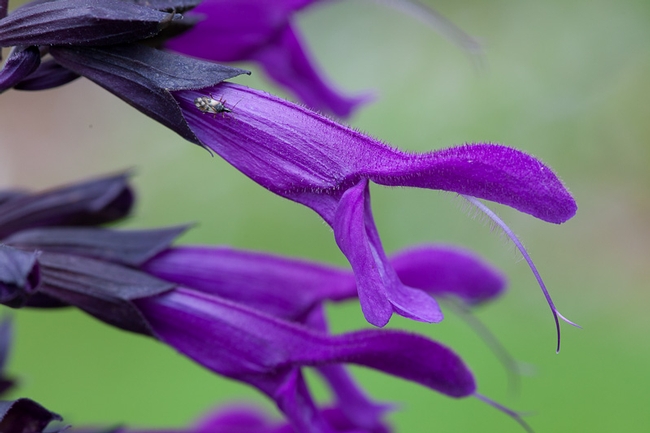
Salvia 'Amistad' photo courtesy of http://fhfgreenmedia.com/
AGM Mexican Bush Sage
Salvia leucantha also known as "velvet sage" or Mexican bush sage is an attractive and very hardy perennial. The attributes of Mexican bush sage have been recognized by the British Royal Horticultural Society with an "Award of Garden Merit". To qualify for this award a plant must meet a number of criteria. The plant must be available (a practical attribute), it must be of outstanding decorative value in the garden, it must be of good constitution, not require specialized growing conditions or care, cannot be particularly susceptible to any pest or disease, and not be susceptible to an unreasonable degree of revision. The society recommends this sage for use in cottage or informal gardens and for cut flowers (I've done this and the cuttings droop pretty quickly). It further recommends its use in gravel gardens or gardens planted in a Mediterranean dry garden.
I just like the plant myself. Any plant that can survive, even thrive in an abandoned garden such as the foreclosure next door for 3 years, get chopped to the ground by the flipper who eventually bought the property, and return late this past summer in full glory really deserves to be recognized.
The purple blooms attract wildlife summer through winter. In fact, it is still blooming today. I recently added my own specimen this past fall. It came with a few blooms which have survived the wind, heat and frosty conditions this little plant has seen in just a few months. This sage will eventually grow in a mound form about 3 foot high and wide, reaching maturity in 3 to 5 years. Mine is placed in a full-sun location but this sage will tolerate some shade. The green-grey leaves are soft with a whitish hairy underside and the inflorescence is purple with a velvet texture. Just luscious. Mexican bush sage was reclassified to the Lamiaceae family from the Labiatae family in the 1990's along with many other dry garden favorites. Enjoy this sage for it's beauty and tough constitution.
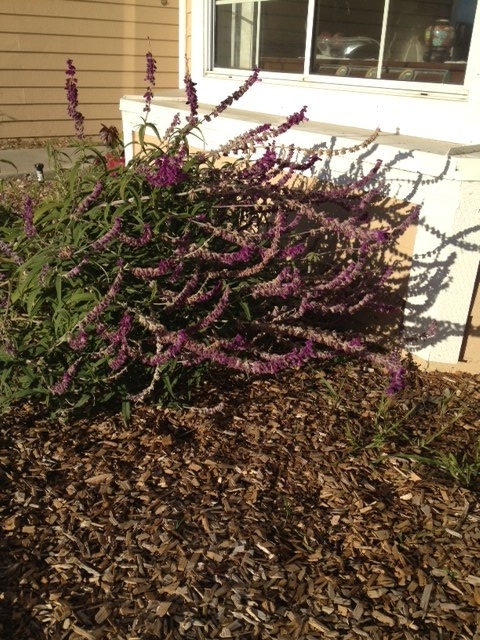
Survivor next door
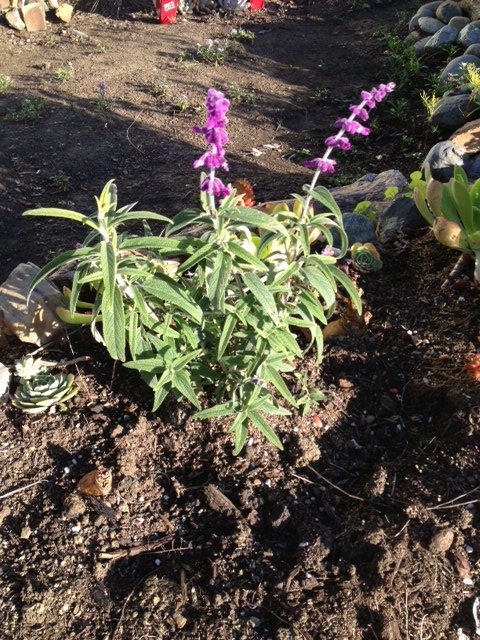
Recently planted specimen
Goodbye to Salvia leucantha
The start of a new year is a good time to look at the garden and decide what plants look drab and tired and may need to be replaced with something new and fresh.
I did just that out of necessity, I had a Mexican sage, Salvia leucantha that had called the front of my house home for several years. This sage grew so much you could not get a ladder behind it so that the Christmas lights could be put up. It was so big it covered a white lavender that died from lack of sun and room to grow. This sage was cut down to the ground last year, this year it came back and grew taller and wider than before and even covered part of my front porch. The only things left in this space are some rose bushes in the back and a sage called lipstick, which the hummingbirds love; it was also pruned way down.
So now I am starting over with a bare front garden. I am looking at all the garden catalogs that come in the mail to get an idea of what plants I can put there that need full sun most of the day and will leave room for other things to grow.
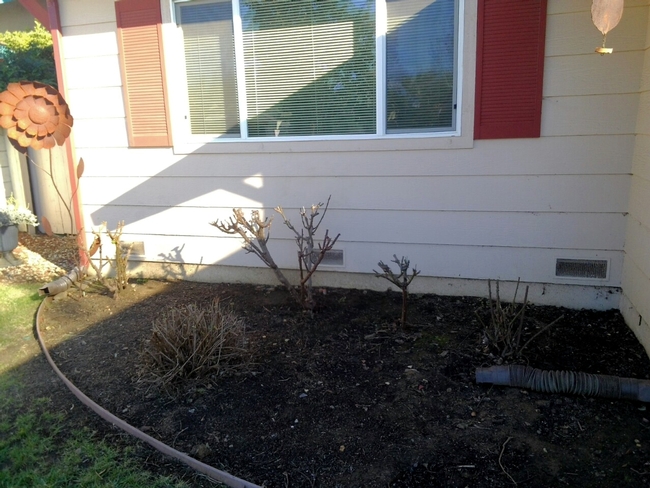
a fresh start
Special Salvias
Last year we visited DJ's Growing Place in Napa, a family-owned nursery started in 1992 in memory of their son, Dustin James. http://www.djsgrowingplace.com/index.html. Pleasant, unpretentious, best appreciated in person. Maureen Clarke, our good friend and a fellow MG, showed us around and helped us choose from many natives. Grown on-site, the plants are acclimated to the local climate.
As the year passed, we watched one plant in particular grow and thrive. Salvia mexicana 'Limelight' (Mexican sage). Upright spikes began forming in August. In September we started watching on a daily basis as they "evolved." What fun. Intense dark purple blossoms protruding from showy lime-green calyxes. Very striking. The blooming spikes can be a foot long. As they grow heavy with flowers, they weep. We just love this plant. Vibrant color as Summer wanes and Fall emerges is exciting and comforting. It's now mid-November, and blooms are still hanging on. Mine is by the fence, where its roots are shaded and it's somewhat protected from the wind. I'd love one in the middle of the backyard where it can spread out as it pleases. 6' x 6' (some say 6' x 3' or 8' x 4'). Evergreen, herbaceous perennial, central Mexico. Full sun. Prefers moderate water during growing season. Stems will become more fragile with "ample" water and fertilizer. Protect from hard freezes, root hardy to 20°F. Prune heavily late Spring, more branches form if pruned hard in Winter, prune moderately throughout Summer if you prefer "good form."
Salvia mexicana x hispanica 'Byron Flynt' (Black Tip Mexican Sage). S. hispanica (Chia) was cultivated by the Aztec Empire, Chia seeds being a main component of their diet. In the photo, it is the potted plant at lower right and reflects the size of our 'Limelight' before we planted it. This year, it goes in the ground, and I expect it will be 5-7' x 4-5' by late Summer. 'Byron Flynt' bloomed a month after the 'Limelight.' It is the strongest growing and longest blooming of the Mexican sages. Loves sun (although some say its blooms are more profuse in semi-shade). Attracts butterflies. Always abuzz with bees and hummingbirds. Gopher and deer tolerant. Exceptionally drought tolerant but better with regular water until established. Roots hardy to 28°F. Online, some claim this "cross" was made by Sonoma County resident Dan Lozano and named after his grandpa, others sell the seeds and say this is a "rare" plant.
I completed this blog thinking my in-ground and potted plants were the same species because I found a plant tag in the pot. Lo and behold, and glad tidings, I have TWO Salvia mexicana species. Duh. All I know is, we love these plants. And I ran outside before the rains came to preserve their tiny seeds (yes, they look like black or white Chia seeds).
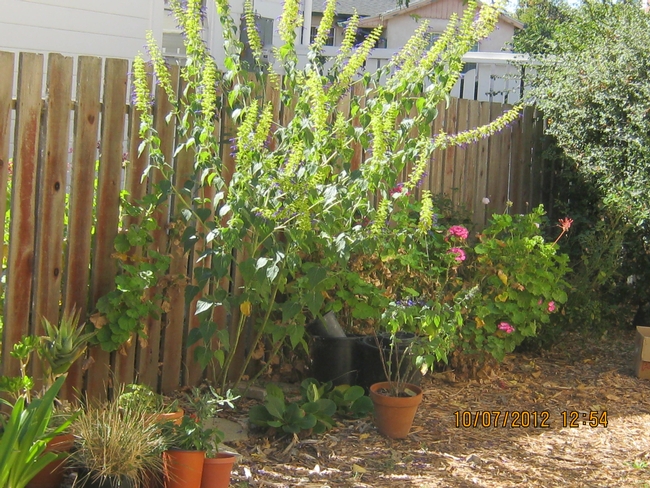
S. mexicana, one in pot and one in ground. (photos by Susan Croissant)
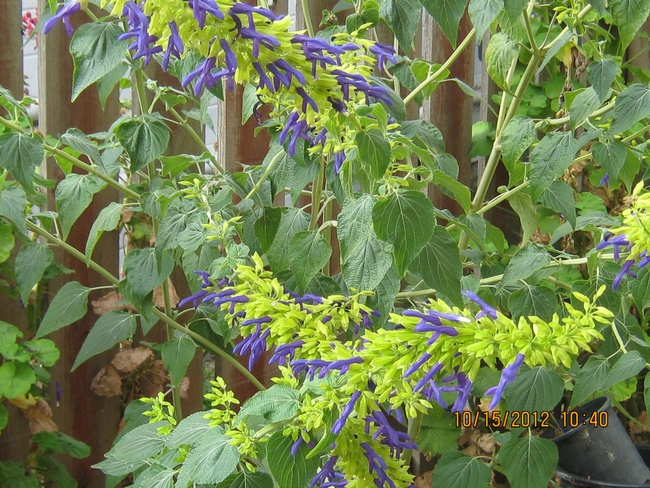
S. mexicana 'limelight' blooms.
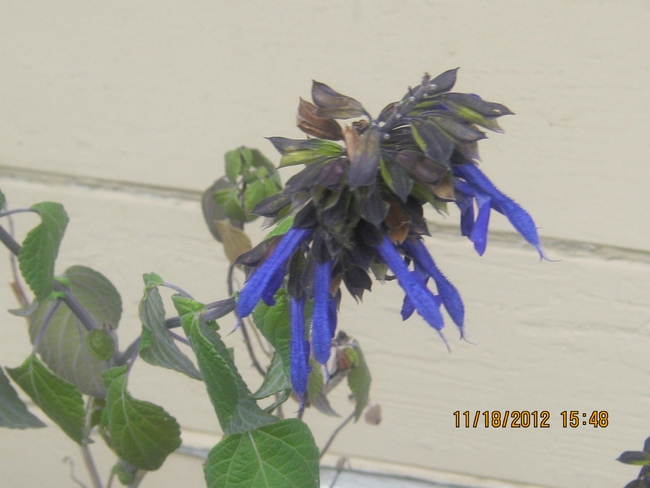
S. mexicana x hispanica 'Byron Flynt'.

